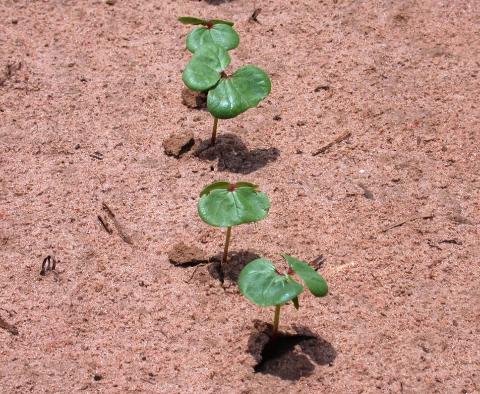
Protecting your young cotton or peanuts should start before you close the furrow with the planter, but don’t get carried away with putting too many things in the furrow at one time. Dr. Scott Monfort did several tests last year with in furrow fertilizers and oberserved salts injuries plus a reduction in stands for peanuts. So, what should growers be putting in the furrow at planting? Here is a list of options for in-furrow products and early season tips.
Peanuts
• Fungicide: A fungicide is generally included in the seed treatment applied by the sheller or seed provider. An additional in-furrow fungicide can be applied by the grower at planting, if needed. Control products are Vellum, Proline, Propulse is a combination of Vellum & Proline, and Abound/Quadrics/Generic Azoxystrobin
• Insecticide: Thimet or Imidacloprid for thrips control. If conditions turn dry after planting watch out for lesser corn stalk borers. Prevathon and Diamond are the recommended products for control of lesser corn stalk borers.
• Inoculant: The inoculant is not always needed if a field has been planted to peanuts within 4 years; however, it would be a good insurance policy to apply each year. The inoculant is needed if a field has been out of peanut for more than 4 years.
• Nematicide (if needed). Control products are Ag Logic, Telone II, and Vellum. UGA research has not shown any benefit to other additional biological and/or fertility products applied in the furrow with the seed.
Cotton
- Fungicide – if your seed doesnt have a fundicide or a grower could use an additional fungicide to protect against rhizoctonia with products like Abound, Vellum, and Proline. Vellum can also provide protection for fusarium wilt
- Nematicides – (if needed) Telone II, Vellum, Ag Logic, and Vydate
- Insecticide – Thrips control on seedling cotton. Control Products are Orthene, Bidrin, and Dimethoate.
Planter
- If you haven’t started planting yet, there is still time to PERFORM A THOROUGH PLANTER CHECK using the planter checklist. Remember to take care of any major issues or parts that needs to be replaced before you get out in the field and start planting. Planter Checklist https://secure.caes.uga.edu/extension/publications/files/pdf/C%201231_1.PDF
- When you notice any spacing or depth issues in the field while planting, make sure to properly IDEntify and fix planter issues before continuing peanut planting with the same planter. Some useful tips for identifying and troubleshooting some common planter issues (with pictures) are available here https://site.extension.uga.edu/precisionag/2021/04/understanding-andtroubleshooting-common-planter-issues/.
- Keep a consistent visual check on IMPORTANT planting parameters from the tractor cab during planting including vacuum pressure, row-unit bounce, ground speed, operation of row-cleaners, gauge-wheels and closing wheels. Minor planter issues – which can affect seed placement and emergence – during planting are hard to catch and more often go unnoticed when not paying close attention.
Planter Maintenance Clinic Video